A Brief History of Representation in Games
As in any other type of media present in our everyday lives, LGBTQIA+ representation in the form of characters inserted in the fantastic stories and many different adventures that gamers around the world get to live through everyday is relatively recent, and there’s still a lot of discussion around a theme that should be simple to understand: People of the most diverse genders and sexualities exist, and it's only fair that everyone should be able to feel and see themselves represented in some way.
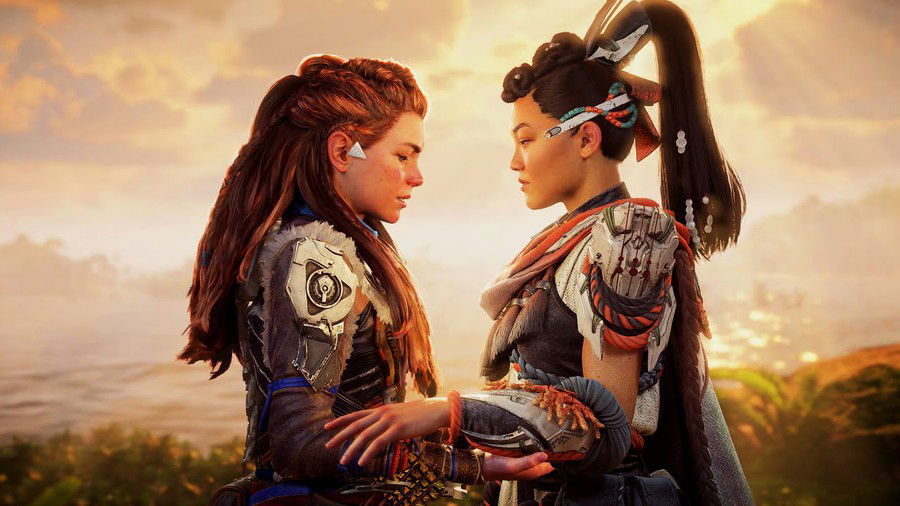
The first and oldest appearance of a character confirmed as LGBT in gaming was in 1985, in the French indie "Le Crime du Parking", whereby at the end of the murder mystery, the player figures out that the culprit was a gay drug dealer named Paco. No extra information or depth is given on the character beyond the brief mention of his sexuality in a screen full of text, but Paco does hold the title as the first ever gay character in a videogame.
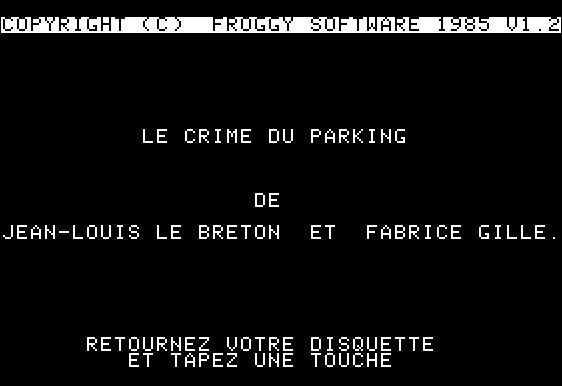
As the years progressed, LGBT characters continued to pop up here and there, slowly and constantly being used as comic relief, such as the character of Erica, from the game Catherine, about whom we will talk more about further on, or extremely stereotyped and/or sexualized, constantly being portrayed as villains. From the 80s all through the 2000s, very few examples existed, and some huge steps in the scenario, such as the first game to allow same-sex marriage between characters only got into the public’s hands in 1998, with the launch of Fallout 2.
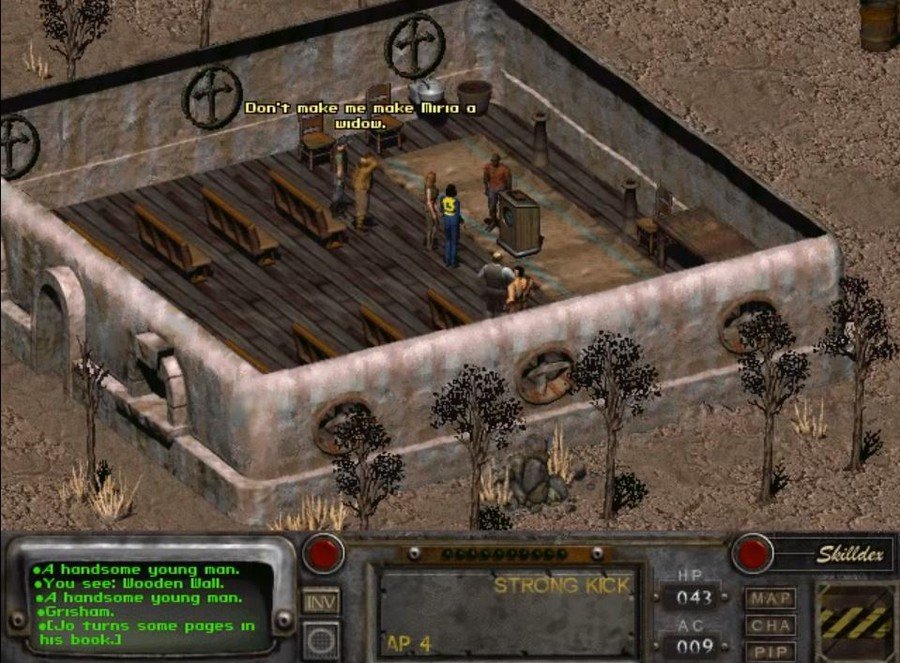
Thankfully, in the last few years, this landscape has been changing, very slowly, but still rushed if compared to representation in other forms of media, and here UmGamer brought an analysis of this important history, as well as several examples of games and characters that discuss these themes through their arcs, plots and existences.
Player’s Choice
To start off, we must discuss a category of games in which the protagonist is, technically, canonically bi or pansexual, and the choice of whom to get into a relationship with is left for the player to decide. Games such as Stardew Valley, Baldur’s Gate 3, Dragon Age, Assassin’s Creed Odyssey and Cyberpunk 2077 offer a varying quantity of available NPCs of different genders, and you decide which sexual orientation will your character have during your campaign by deciding in whom, among your potential love interests, you want to invest on.
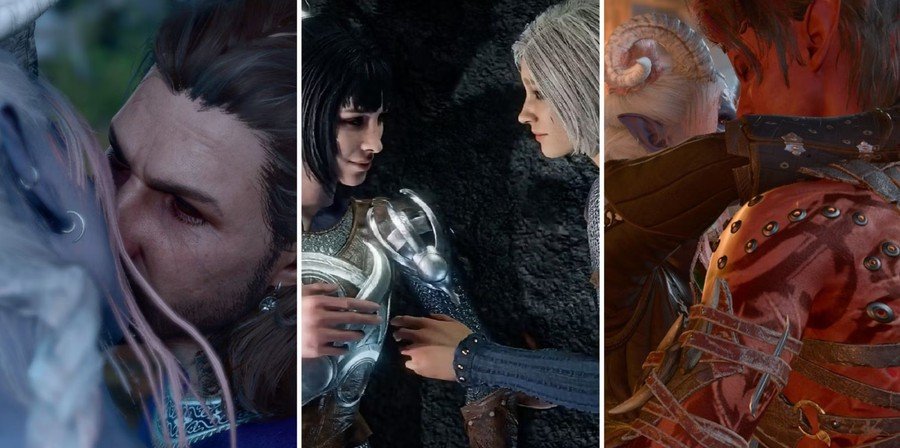
Frequently in these games the romanceable NPCs, meaning, the ones with whom the player can get their character into a relationship with, also end up fitting into the pan/bisexual specter, due to accepting relationships with players of all genders, but there are exceptions, such as the - deservedly - famous Judy, from Cyberpunk, with whom the player can only get into relationship territory if their characters are also female, since she is a lesbian.

It’s worth pointing out in this category specially the character creation system in Cyberpunk 2077, which by allowing the player to customize literally V’s entire body, was one of the first games ever to allow the creation of a playable transsexual character.
Examples of LGBTQIA+ Representation in Notable Games
In addition to situations in which the player can choose which direction to take one or more character’s sexualities, we have, of course, characters in several games which are canonically LGBTQIA+, be it an explicit or implicit information in the game, or even later revealed by devs and directors in interviews. Down below, we’ve put together a list with some of the most famous representation instances inside the games and some that you might not even know about, trying to comprehend as many identities as possible and bring at least one example for each letter in the acronym.
Super Mario Bros. 2
The first game in this list may surprise you, both by having been released in 1988 and for being a Nintendo game, famously a company which likes to keep their games as family friendly as possible and away from controversial topics
However, unexpectedly, among the big Japanese game studios contemporary to it, Nintendo has a surprisingly close relationship to queer topics and representation, however subliminal and implicit it might present itself, such as the many moments over the years which subtly question the gender of the protagonist of one of their most famous franchises, Link.
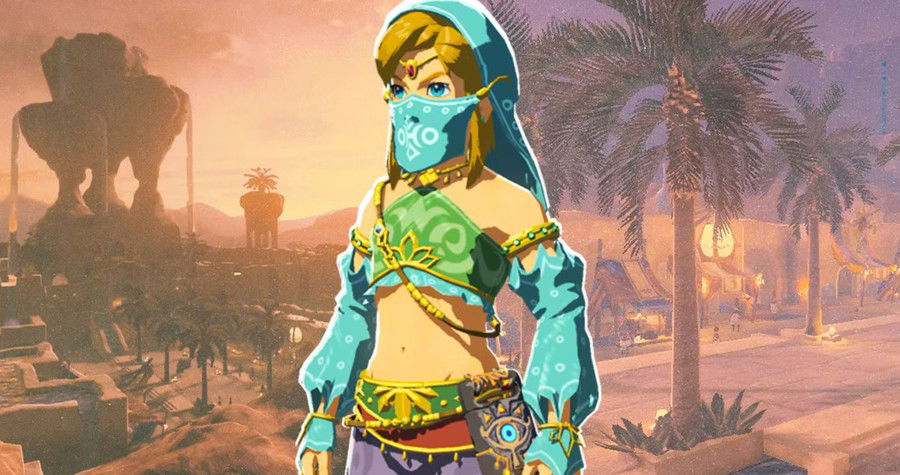
Before that, however, at the release of Super Mario Bros. 2 we got introduced to possibly the first trans character in video game history: Birdo, a villain who identifies as a woman despite having been born with a male body and demands to be called by her real name, Birdetta.

Life is Strange
As explained in a previous article about the game, the protagonist of the famous player choice-based Life is Strange, originally launched in 2015, is designed so that any person playing the game can identify with her as much as possible, and her name, appearance, clothes, etc., everything invokes a neutrality, a certain androgyny or absence of gender. One of the aspects implemented so that each player adds their own life experiences to their gameplay is the decision to kiss or not kiss Chloe and, later, Warren. Because of that, Max Caulfield is canonically considered bisexual.
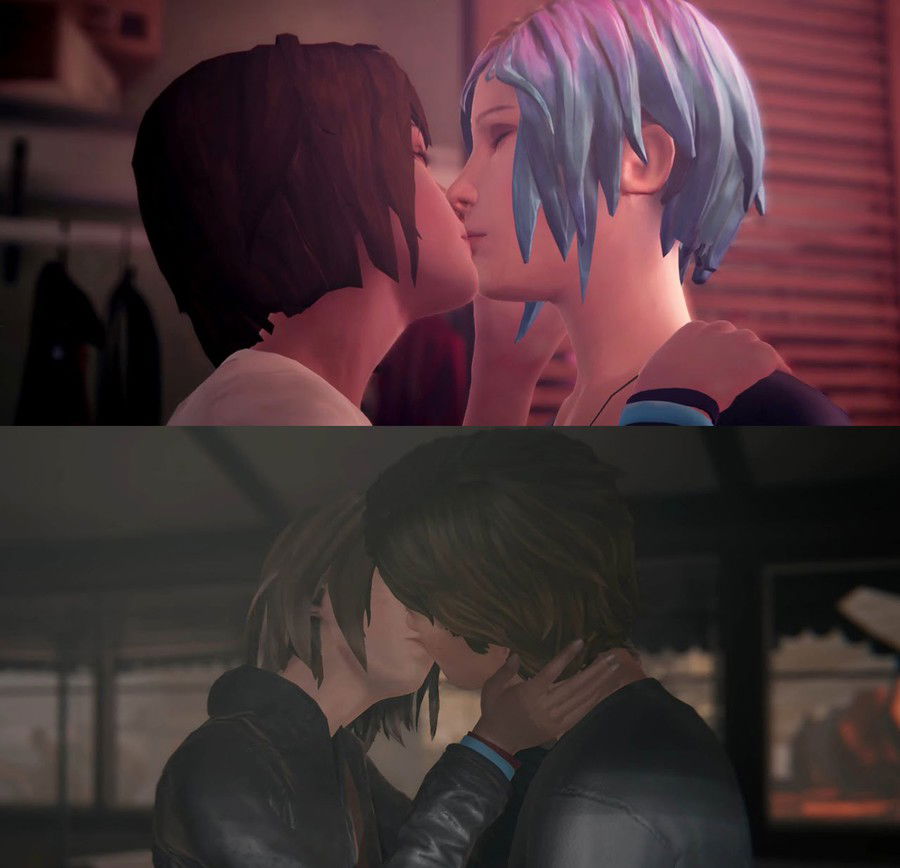
When talking about Chloe Price, along the base game and the DLC Before the Storm, which tells the story of Chloe and Rachel before Max’s arrival back in Arcadia Bay, through many mentions and dialogues here and there, strewn across several points within the full story, makes it implicit that she, currently, is only interested in women, and is considered canonically a lesbian, as well as another character who, in the first game, was nothing more than a background character alongside the rest of Max’s classmates, but in the sequel Life is Strange 3, has a much bigger role and importance: Steph.
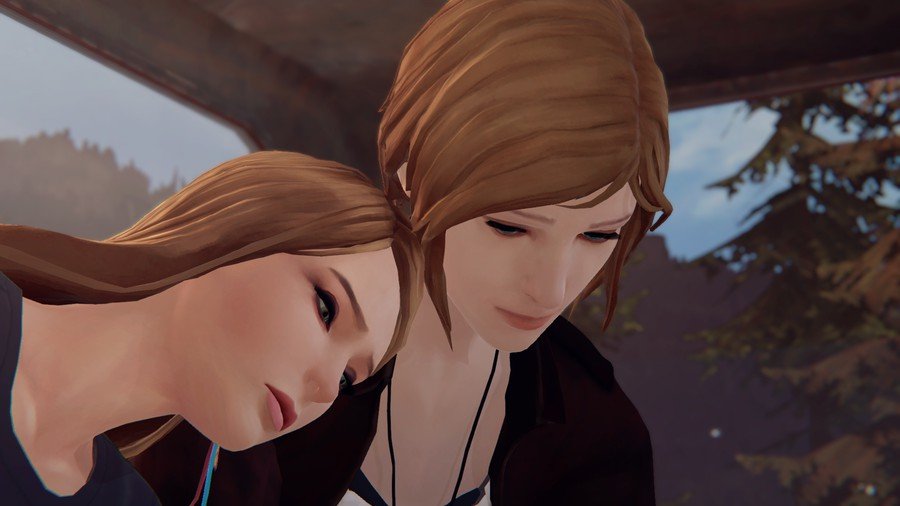
Possibly due to a reason similar to that of Max’s bisexuality, the protagonist of the third game, Alex Chen, defines her own sexuality as “being attracted to people, no matter their gender”, and therefore is another canonically bi/pansexual character.
NieR
The NieR franchise is a pleasant surprise, setting itself apart among other huge famous franchises, also from Japan but who refuse mostly to this day to even mention the possibility of an LGBT character, by the sheer quantity of them present in their games, since the release of NieR: Gestalt in 2010.
First introduced in NieR Gestalt itself, and re-introduced to a new audience more recently in 2021, with the launch of the remake NieR Replicant ver. 1.22474487139…, one of the most unique representations which we cannot leave out of this list is the one impersonated in Kainé, who is an intersex person, meaning someone born with both male and female biological characteristics, and in-game she identifies simply as a woman.
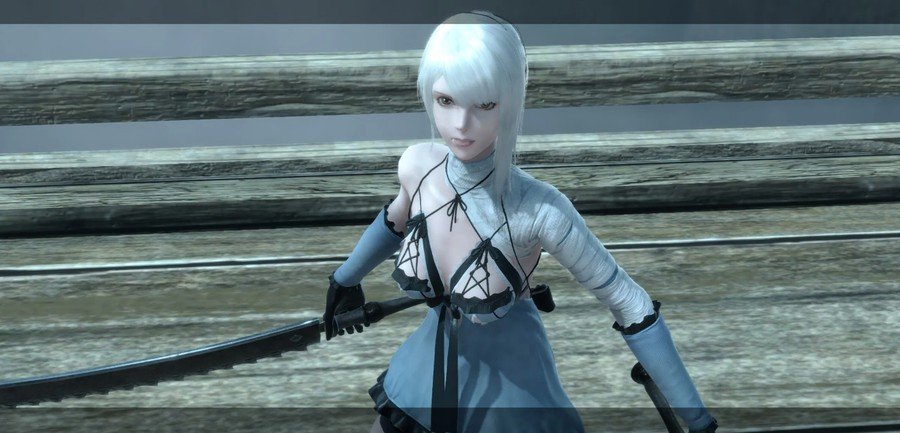
In both versions, Gestalt and Replicant, we also have Emil, who was confirmed by the creator and director of the games, Yoko Taro, in an interview as being a gay man. This fact is also reinforced in the Grimoire Nier book, also revealing to us that Emil had a crush on Brother Nier.

In NieR: Automata, in the other hand, we don’t have any canonically LGBT main characters, but we’re talking about a game which greatly incentivizes exploration and the completion of side quests so that the player gets to know more about the world and the story, and entangled in the middle of these side quests and optional dialogues, we have two sapphic love stories, even though both have somewhat tragic endings.
The first one involves Operator 6O, the operator responsible for 2B who communicates with her all throughout the game. There is a dialogue in which 6O tells 2B about asking another operator out, but being turned down, and calling 2B to unburden a little.
The Second one is about Androids 16D and her instructor 11B, and a side quest called “11B’s Memento”. Depending on the player’s choice between two dialogue options by the end of the quest, 16D might end up confessing to 2B that she was in a relationship with 11B, and that now she wishes to become a combat Android, to avenge the death of her beloved.
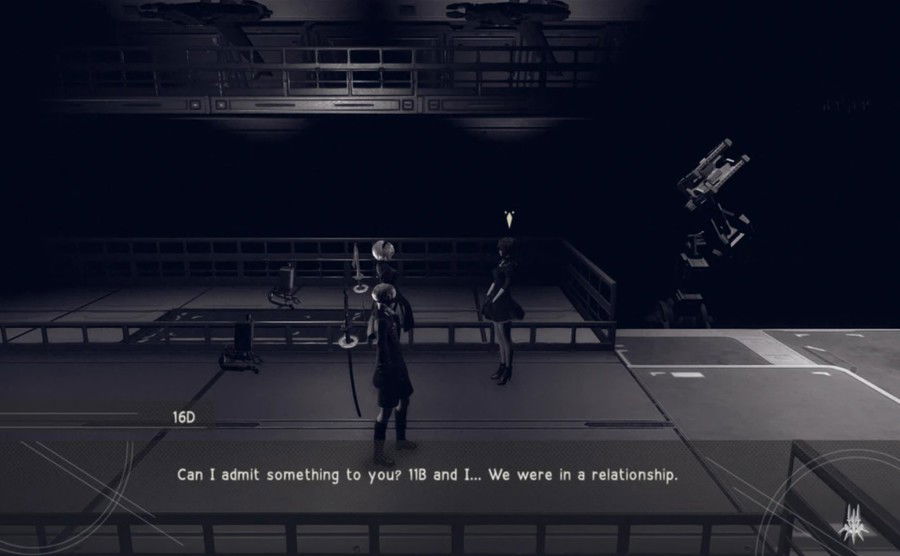
Final Fantasy
Unfortunately, we cannot say the same we spoke of NieR about another huge franchise within the world’s most famous JRPGs: Final Fantasy.
Following the most common tendency among Japanese companies, the theme was ignored for many years. The first main character openly gay in the entire franchise was only presented to the public in 2023: Dion Lesage, the Dominant of Bahamut in Final Fantasy XVI, who has a romance with his companion Terence.
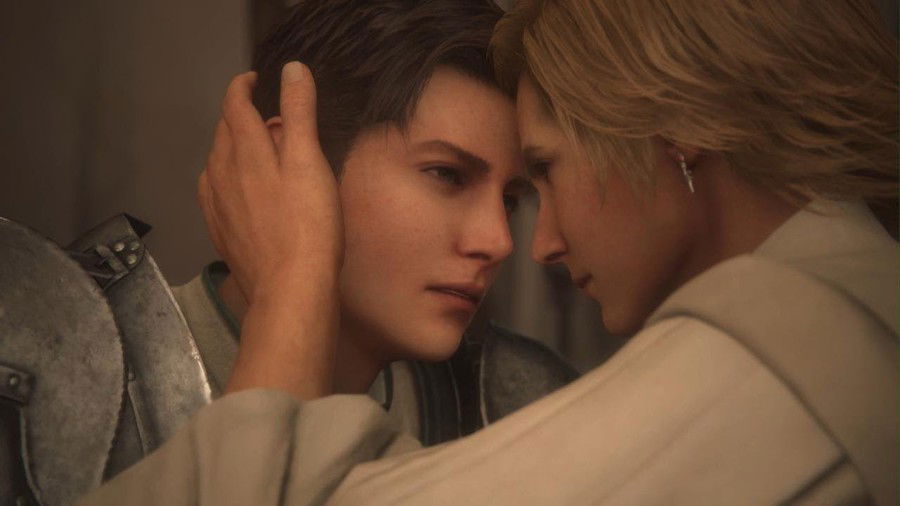
Before Dion’s creation, the one who held the title of most “explicitly” LGBT character in the franchise will surprise many: Quina Quen, from Final Fantasy IX. For the entire game, Quina uses the pronoun “s/he”, and is a member of a race that canonically has no gender. This is not explicitly said, but from this information we can understand Quina as the first agender character in the list, and one of the very few in the gaming world.
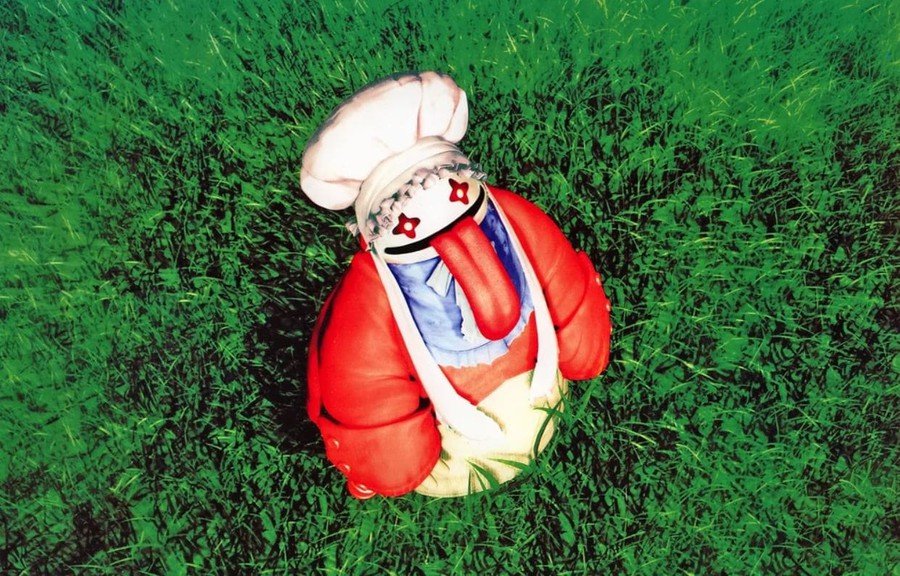
Those two examples aside, the most the franchise has brought us are subtle hints, implicit relationships, but always leaving a wide margin for doubt by never being actually confirmed as such, not by their respective games and not by anyone at Square in any posterior interview.
We can count into that category the eccentric Andrea Rhodea, from FFVII, who in the Remake was redesigned even further into the stereotype of someone who does not conform to social gender rules, and the relationship between Fang and Vanille in Final Fantasy XIII, considered by the overwhelming majority of fans as romantic despite the lack of confirmation from the studio.
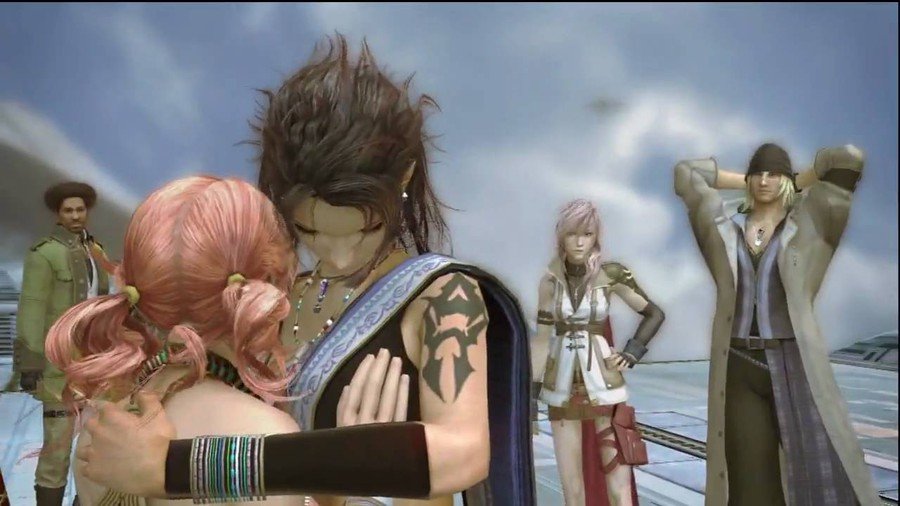
Persona 4
Still within the theme, both about JRPGs and about information left implicit but never openly confirmed, we have the case of Kanji Tatsumi in Persona 4. The character’s arc within the game is totally centered around his difficulty in accepting his own gender expression, masculinity and possible homosexuality, even though that’s never explicitly said in these words. His Shadow Self, the side of himself he has difficulty accepting, is a gay stereotype who ends up feeling purposefully forced in many instances.

The game and this instance of representation are somewhat questionable according to many, due to jokes made by other characters at his expense and forced stereotypes, but considering that this game was released in 2008 and in Japan, it was definitely ahead of its time.
Valorant
One of the most relevant companies in the games and e-sports scenarios currently is, doubtlessly, Riot Games, and the studio has been trying in the last few years to include more LGBT representation in their games. We won’t discuss characters from the rich universe of Runeterra in this article, as it’s a theme worthy of being explored further on its own, but we’ll mention characters from Riot’s huge potency within the First-Person Shooter genre: Valorant.
In 2022, the game’s official page confirmed the canonically lesbian relationship between two of its characters, Raze and Killjoy, who were the only two queer characters in the game up to the release, in March 2024, of Clove, a canonically non-binary agent, who goes by neutral pronouns (they/them).

The non-binary identity is one of the least represented ones and least known by people “outside the bubble”, who do not have a lot of queer influence and people in their day-to-day lives, so such a famous game from a huge company like Riot bringing this representation was something that, not without its fair share of controversy, was overall quite positive for the community.

Hades
Hades is a game that almost gets into the player choice category, since technically, they’re the ones who choose whether to invest in a relationship with Megaera, Thanatos, or even to get into a throuple with both of them, but ended up getting its own topic since canonically Zagreus is one of the few non-monogamous characters represented in a game

On top of the main throuple, we also have Dusa, one of the most beloved characters from the game, who reveals with a few dialogue lines that she doesn’t feel the need or intends to ever having a physical relationship, fitting right into the Asexual spectrum, the very literally achillean couple Patroclus and Achilles, who protagonize one of the quests fans love the most in the first game, and Chaos, the entity/god of chaos, who has no defined gender, is only referred to in the game using they/them pronouns and has as their only gender expression their absurdly - and intended to be so - androgynous appearance.
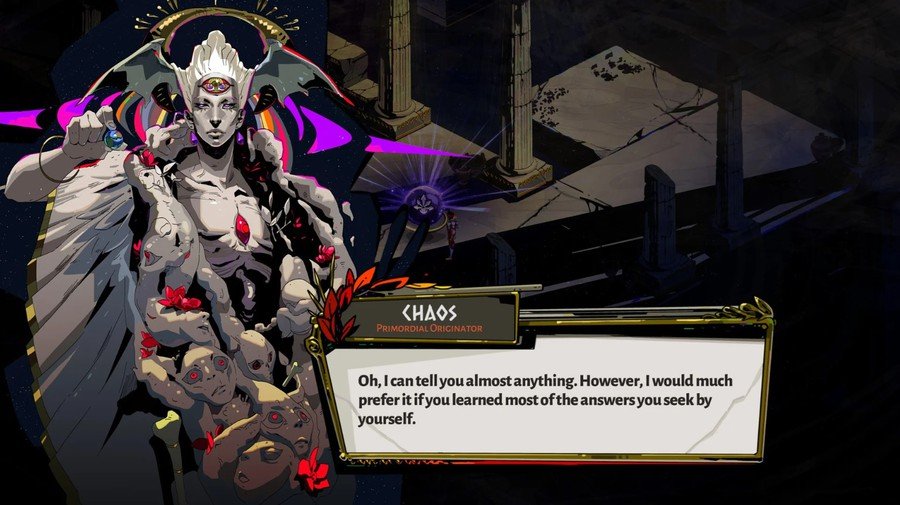
The protagonist of the sequel, Hades 2, which is in Early Access right now (We speak more about her here!), Melinöe, follows in her older brother’s footsteps. Since the full game hasn’t yet been released, we still don’t know for sure which NPCs will be romanceable, but the… admiration our protagonist has towards one of her rivals, Nemesis, is already notorious and everything points towards her playing a part similar to Thanatos’ in the previous one.

Undertale
Another indie title which brings us surprisingly present and effective representation was the instant hit Undertale, released in 2015. Similar to what was done in Life is Strange, the gender of protagonists Frisk and Chara is left open to interpretation, intending to the player projecting their own gender and sexuality onto them. Both are only referred to by they or it pronouns and have a rather androgynous appearance.
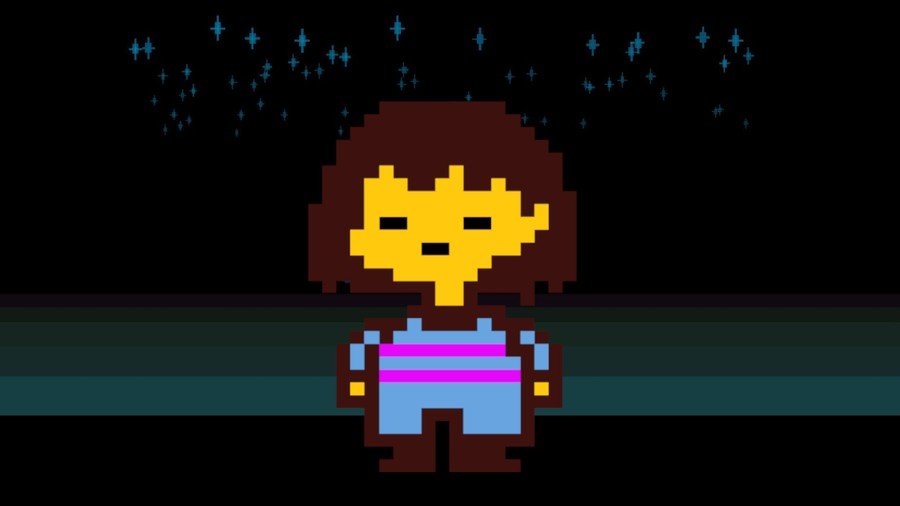
Still in Undertale we have Undyne and Alphys, who by the endgame form a canonically sapphic couple, and even what most consider a trans character, an existence who in the original game habited the Mad Dummy NPC and used they/them pronouns, but who in the Nintendo Switch version now habits a female NPC, Mad Mew Mew, calls herself by feminine pronouns and declares that the second she laid eyes on this body, she knew this was her.

Catherine
Catherine may be the more underground title in this list, despite being a game that achieved immense success. Released in its original version in 2011 and as the remake Catherine: Full Body in 2019, it’s a game focused on puzzles and storytelling and brought us one of the first open and canonically transsexual characters: Erica Anderson, a waitress in the diner the protagonist and his friends always get together to hang out at, a friend group she’s a part of, and where a good portion of the game takes place.

Erica is what can be called a great example of controversial and somewhat badly represented representation, because of a single dialogue at the end of the game. She’s a protagonist of a secondary romance plot with one of the other guys in the friend group, Toby, and sadly this storyline concludes in the original game with a scene where their friends laugh at and mock Toby for being “tricked” by Erica after sleeping with her, reinforcing negative stereotypes.
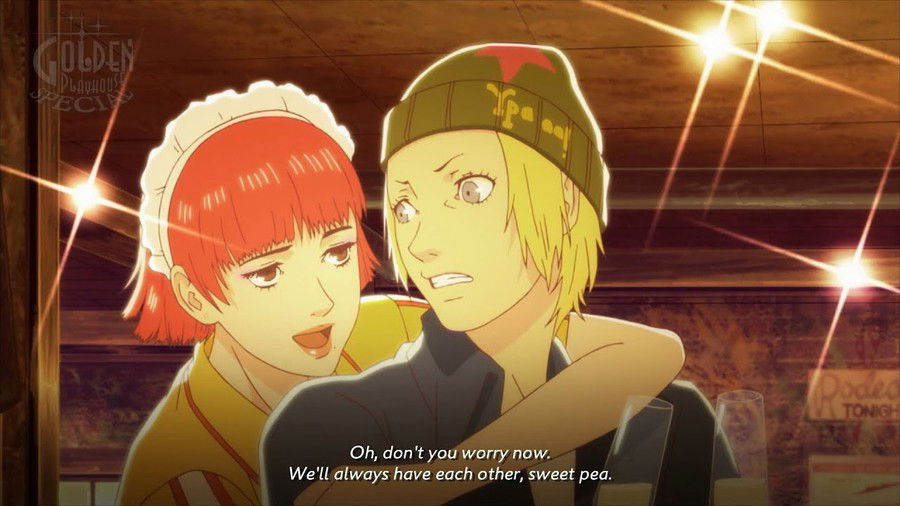
On the positive side, despite the “jokes” with Erica made by the friend group, all of them respect her transition, her pronouns and her name. In the remake, one of the possible routes includes a scene of the group in high school times, and in this scene we can see Erica before her transition, and her dialogue lines make it clear that she intends on starting it soon.
The Last of Us
One of, if not the most celebrated survival and first-person shooter with zombie themes in the last decade at least, success not only among gamers, but also with the public with the release of the acclaimed series starring Pedro Pascal as Joel and Bella Ramsey as Ellie (Bella is a non-binary person, which adds another layer of representation to the character). In the game, however, it’s firstly revealed in the base game’s “Left Behind” DLC and then reinforced in the sequel with her relationship with Dina that Ellie is a lesbian character, feeling attracted to and getting involved only with women.

It’s also worth mentioning the two survivors, Bill and Frank, who in the game were already a gay couple, but when we encounter Bill, his partner Frank had already committed suicide after being infected. In the series, we got a truly beautiful remake of this portion of the game, resulting in a tear-jerking episode that tells their love story, changing a few details in the story to give them a much more deserved, calm ending.

And in Last of Us 2, we have as a very relevant character Lev, a trans 13-year-old boy who travels with his sister Yara and with whom we meet up and form a connection with, playing as Abby.
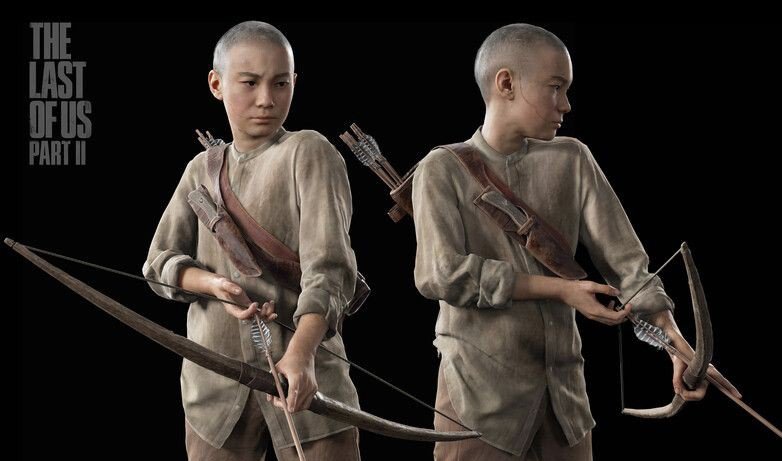
Conclusion
We could still mention iconic characters such as Poison, from Street Fighter, who was for a long time one of the few known representations of a trans woman in games, some less known ones like Paolo de La Vega, a trans man who is leader of a faction in Far Cry 6 or even the protagonist of Horizon Forbidden West, Aloy, who by the end of the Burning Shores DLC is confirmed as being sapphic by kissing the warrior Seyka.
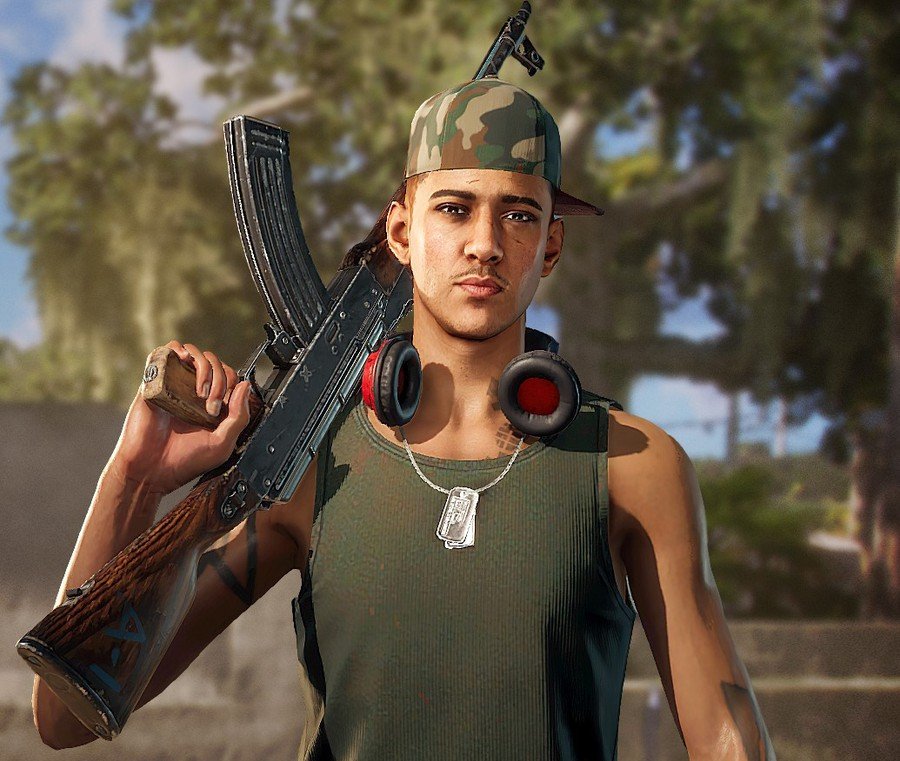
Despite the several examples mentioned here, the majority of them are very recent, and the older ones tend to bring problematic matters and jokes attached to the representation which take a little bit of its brightness off. However, we’re definitely walking towards a more diverse future in the gaming world, with many LGBTQIA+ developers getting into the industry in the last few years and the release of several games targeted at this demographic.

Even though there still famously exists a lot of resistance and prejudice towards these themes inside “gamer” communities, the existence of people outside the cisgender-straight norm is little by little being introduced into this universe, after quite a lot of effort, mirroring the fight for rights these same people face in real life.
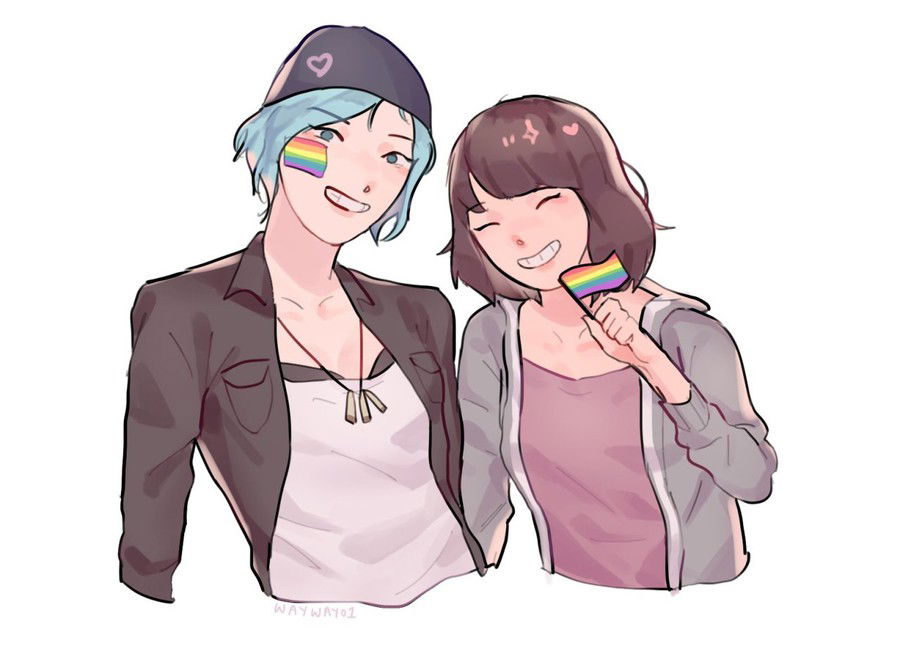
Thank you for reading, and see you next time!








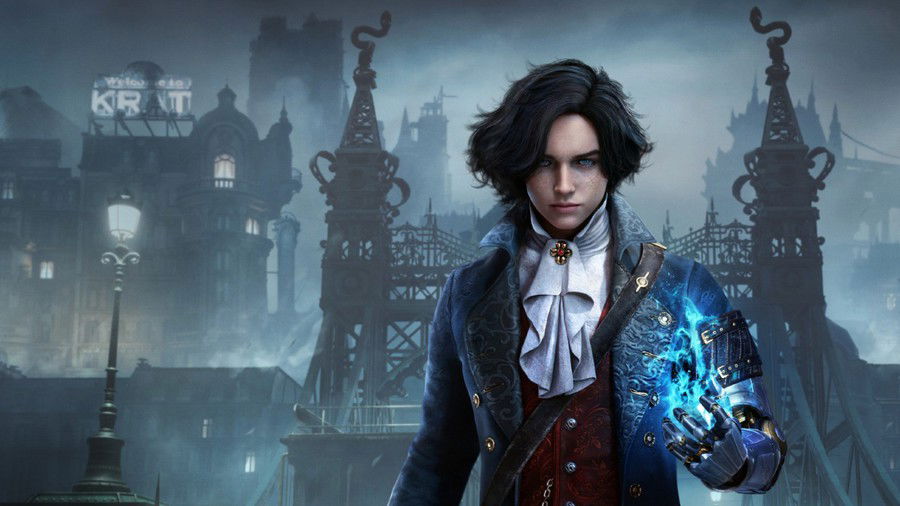


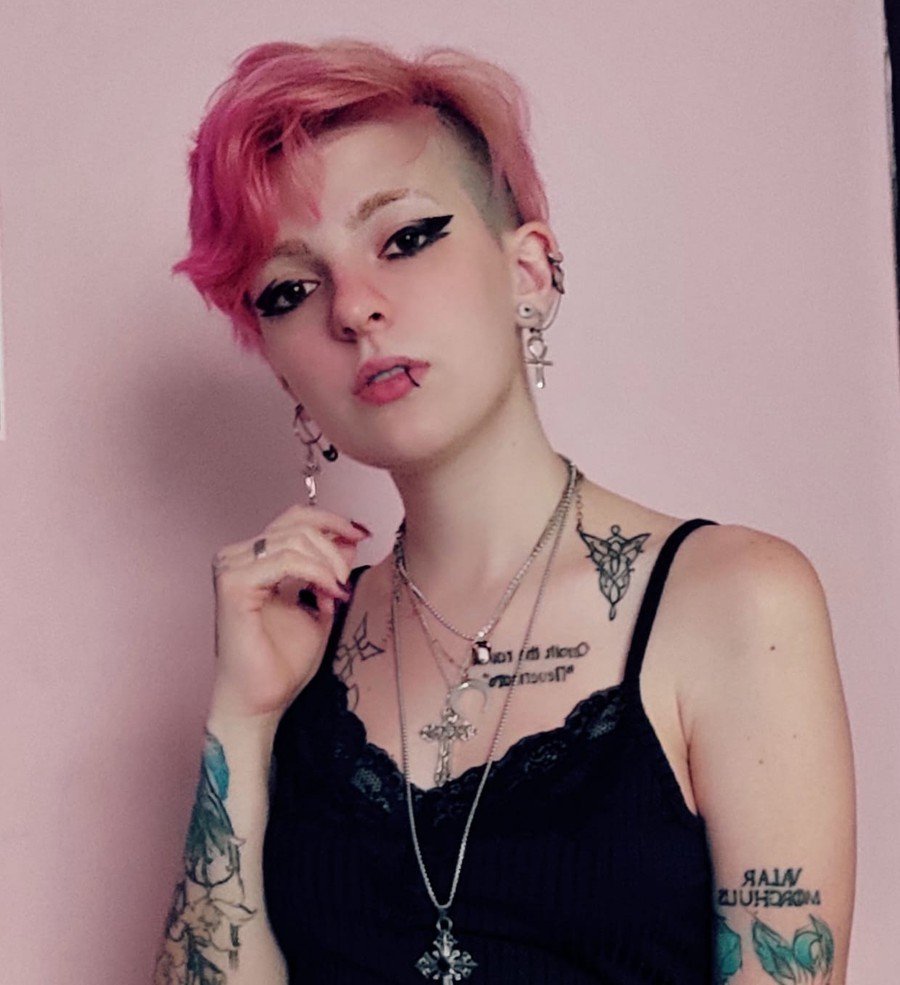

— Comments 0
, Reactions 1
Be the first to comment